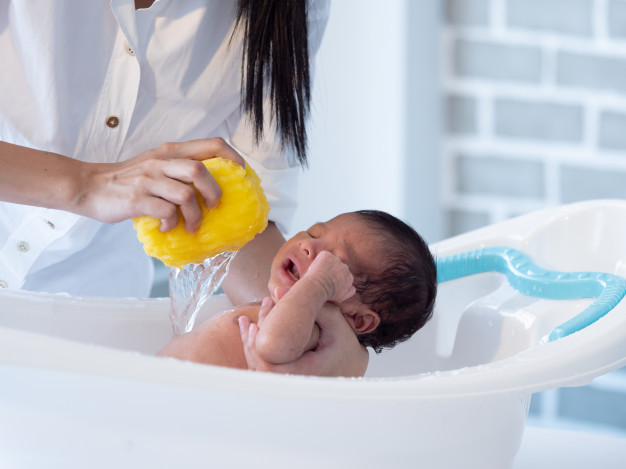Bath time should be a sweet, calming experience. However, what happens when your baby cries, squirms, or screams every time water touches their skin? **Don’t worry—**you’re not alone! Because many newborns and infants feel unsure at first, it can take patience to help them relax. Fortunately, with a few simple tricks and the right mindset, you can turn tears into giggles and build a happy routine your baby will grow to love.
In this blog, we’ll explore why babies get fussy during bath time and share easy, practical steps to soothe and comfort your little one. So, let’s splash the stress away!
🍼 Why Do Babies Cry During Bath Time?
Understanding the cause often helps you fix it. Typically, babies fuss because of:
- Cold water or air
- Hunger or sleepiness
- Fear of water or new sensations
- Uncomfortable bath setup
- Startling movements or noise
Once you know the “why,” calming that fussy baby becomes far easier.
🌈 8 Easy Steps to Calm a Fussy Baby During Bath Time
1. Time It Right
First, avoid bathing when baby is tired, hungry, or freshly fed. Ideally, choose a moment when your baby is calm and alert—about an hour after feeding.
🧸 Example: Sara noticed her baby cried right after meals. Therefore, she switched to mid‑morning baths when he was well‑fed and rested—problem solved!
2. Create a Warm, Cozy Environment
Next, ensure the room feels snug (24–26 °C) and the water stays warm (≈ 37 °C). Moreover, close windows and fans before you begin.
🧸 Tip: Test the water with your elbow—if it feels comfortably warm, you’re good to go.
3. Keep a Soft Towel Around Baby
Sometimes, babies protest during undressing. Instead, wrap them in a towel and uncover one part at a time so they feel secure.
🧸 Example: Lina kept her baby wrapped while gently washing each limb. Consequently, her baby’s comfort level improved immediately.
4. Ease Into the Water Slowly
Rather than rushing, gently lower baby in feet‑first while supporting head and neck. Meanwhile, talk or sing softly to maintain eye contact and calm nerves.
🧸 Tip: Your smile quickly reassures your baby that everything is safe.
5. Use a Gentle Touch and Calm Voice
Because babies are sensitive, use slow strokes and speak in a soothing tone. Gradually, curiosity will replace fussiness.
🧸 Example: Arman chatted sweetly while washing tiny toes. Soon, quiet curiosity replaced crying.
6. Try Bath Toys or Soft Music
Additionally, add a floating toy or gentle lullaby to make the bath feel playful. Even a soft sponge or rubber duck can shift focus from fear to fun!
🧸 Tip: Keep toys simple so they relax rather than overstimulate.
7. Limit Bath Time to 5–10 Minutes
Early on, short and sweet works best. Afterward, you can slowly extend sessions as your baby grows more comfortable.
🧸 Tip: A quick, pleasant wash is far better than a long bath filled with tears.
8. End with Warmth and Cuddles
Finally, wrap your baby in a fluffy towel, pat dry, and enjoy a cozy cuddle or gentle massage. That way, bath time always finishes with warmth and love.
🧸 Example: Nazifa finishes each bath with lotion and a lullaby. Consequently, her baby now associates water with calm and affection.

💪 Motivation for New Parent
At first, bath time can feel tough. Nevertheless, remember that your loving presence matters most. Because every baby is unique, adjustment takes time. Even one calmer bath counts as progress.
Before long, your baby will realize water is safe, and bath time will become a cherished ritual. So, keep going—your baby’s joyful splashes are just around the corner. 💧❤️
Would you like a follow-up post on How to Bathe a Newborn Baby: Step-by-Step Guide






